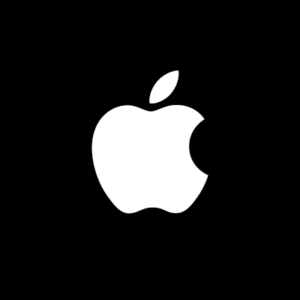
Explore the remarkable evolution of Apple Inc., born on April 1, 1976, in a Cupertino garage, founded by Steve Jobs, Steve Wozniak, and Ronald Wayne. Publicly traded since December 12, 1980, Apple went on to become one of the world’s most valuable companies, with a market capitalization reaching unprecedented heights.
Anchored by iconic products like the Macintosh, iPod, iPhone, and iPad, Apple’s journey hit a pinnacle in 2018 when it became the first U.S. company to achieve a $1 trillion market cap. This milestone reflected its consistent innovation, notably with the iPhone setting sales records. The company’s stock performance and a 2020 stock split aimed at broadening investor accessibility further underscore Apple’s financial prowess.
Noteworthy is Apple’s commitment to sustainability, achieving 100% renewable energy for operations and products. The Apple Watch, a foray into wearables, not only dominated the market but also advanced health monitoring.
Financially, Apple’s best year was 2018, with a series of record-breaking profit years showcasing its enduring success. The number of shares outstanding fluctuates due to buybacks, and its stock performance highlights investor confidence.
In conclusion, Apple’s narrative transcends corporate success—it’s a saga of innovation, resilience, and a dedication to pushing technological boundaries. From the Mac to the iPhone, Apple’s impact resonates, shaping the digital era’s way of life.
Apple Net Worth
Examine the historical net worth trajectory of Apple Inc. (AAPL) over the past decade through an interactive chart. The market capitalization, a fundamental metric conveying a company’s overall worth, is commonly computed by multiplying the prevailing stock price by the total number of outstanding shares. As of January 19, 2024, Apple’s net worth stands at a substantial $2916.58 billion, exemplifying its robust financial standing and market valuation. This figure serves as a testament to the company’s market dominance and sustained investor confidence over the specified period.
| Year | Average Stock Price | Year High | Year Low | Year Close | % Change |
| 2024 | $185.2215 | $191.56 | $181.18 | $191.56 | -0.50% |
| 2023 | $172.1251 | $198.11 | $124.3284 | $192.53 | 49.00% |
| 2022 | $153.5276 | $179.9586 | $125.3427 | $129.2112 | -26.40% |
| 2021 | $139.0277 | $178.2975 | $114.5153 | $175.5686 | 34.65% |
| 2020 | $93.3959 | $134.3217 | $54.7794 | $130.391 | 82.31% |
| 2019 | $50.421 | $71.5219 | $34.1178 | $71.5219 | 88.97% |
| 2018 | $45.0581 | $55.4898 | $35.2312 | $37.849 | -5.39% |
| 2017 | $35.3417 | $41.7055 | $26.9909 | $40.0058 | 48.48% |
| 2016 | $24.1002 | $27.3677 | $20.7962 | $26.9444 | 12.48% |
| 2015 | $27.0952 | $29.8987 | $23.3671 | $23.9546 | -3.02% |
| 2014 | $20.477 | $26.629 | $15.6481 | $24.7001 | 40.62% |
| 2013 | $14.6314 | $17.8494 | $11.9963 | $17.5655 | 8.06% |
| 2012 | $17.4804 | $21.3443 | $12.4485 | $16.2552 | 32.59% |
| 2011 | $11.0189 | $12.7818 | $9.5452 | $12.2599 | 25.56% |
| 2010 | $7.8658 | $9.8524 | $5.8136 | $9.7643 | 53.06% |
| 2009 | $4.4443 | $6.4066 | $2.3672 | $6.3792 | 146.90% |
| 2008 | $4.2979 | $5.9008 | $2.4365 | $2.5837 | -56.91% |
| 2007 | $3.883 | $6.0491 | $2.5207 | $5.9962 | 133.48% |
| 2006 | $2.1436 | $2.7792 | $1.5339 | $2.5682 | 18.01% |
| 2005 | $1.4129 | $2.2698 | $0.9579 | $2.1762 | 123.27% |
| 2004 | $0.5377 | $1.0359 | $0.3221 | $0.9747 | 201.30% |
| 2003 | $0.2806 | $0.3757 | $0.1986 | $0.3235 | 49.15% |
| 2002 | $0.2897 | $0.3952 | $0.2058 | $0.2169 | -34.57% |
| 2001 | $0.306 | $0.4025 | $0.2252 | $0.3315 | 47.20% |
| 2000 | $0.6919 | $1.0912 | $0.2119 | $0.2252 | -71.06% |
| 1999 | $0.4372 | $0.8916 | $0.2436 | $0.7781 | 151.16% |
| 1998 | $0.2313 | $0.3254 | $0.1202 | $0.3098 | 211.67% |
| 1997 | $0.136 | $0.2209 | $0.0979 | $0.0994 | -37.05% |
| 1996 | $0.1886 | $0.2649 | $0.1277 | $0.1579 | -34.54% |
| 1995 | $0.305 | $0.3715 | $0.2412 | $0.2412 | -17.34% |
| 1994 | $0.2534 | $0.3227 | $0.1868 | $0.2918 | 35.16% |
| 1993 | $0.3004 | $0.4739 | $0.1663 | $0.2159 | -50.44% |
| 1992 | $0.3976 | $0.5059 | $0.3146 | $0.4356 | 6.92% |
| 1991 | $0.3775 | $0.5219 | $0.2959 | $0.4074 | 32.36% |
| 1990 | $0.2672 | $0.337 | $0.1784 | $0.3078 | 23.52% |
| 1989 | $0.2931 | $0.3492 | $0.237 | $0.2492 | -11.57% |
| 1988 | $0.2895 | $0.3293 | $0.253 | $0.2818 | -3.36% |
| 1987 | $0.2698 | $0.4104 | $0.1416 | $0.2916 | 107.84% |
| 1986 | $0.1124 | $0.1515 | $0.0766 | $0.1403 | 84.12% |
| 1985 | $0.0699 | $0.106 | $0.0502 | $0.0762 | -24.40% |
| 1984 | $0.0928 | $0.1152 | $0.0757 | $0.1008 | 19.43% |
| 1983 | $0.1299 | $0.2173 | $0.0619 | $0.0844 | -18.38% |
| 1982 | $0.0663 | $0.1173 | $0.0381 | $0.1034 | 34.99% |
| 1981 | $0.0842 | $0.1195 | $0.0494 | $0.0766 | -35.19% |
Apple Asset
In the fast-paced world of technology, Apple Inc. has not only left an indelible mark on the industry but has also amassed a treasure trove of assets that distinguish it as a financial powerhouse. Beyond the sleek devices and iconic logo, Apple’s assets are the pillars supporting its global success. In this exploration, we’ll delve into the intrinsic value of each asset, quantifying their worth in the language of dollars, that contributes to Apple’s formidable financial standing.
- Financial Assets:
Apple’s financial assets extend far beyond mere numbers on a balance sheet. The substantial cash reserves, valued at an awe-inspiring $80 billion as of the latest report, serve as a financial cushion, empowering the company to weather economic uncertainties and seize strategic opportunities. This liquidity provides Apple with the agility to invest in research and development, fund ambitious projects, and navigate market fluctuations. In essence, the financial assets not only secure the company’s stability but fuel its future growth and innovation.
- Intellectual Property Portfolio:
Apple’s intellectual property portfolio is a goldmine of innovation, encompassing patents, trademarks, and copyrights. Beyond their legal significance, these assets embody the culmination of Apple’s dedication to pushing technological boundaries. Valued at an estimated $200 billion, this reservoir of intellectual property cements Apple’s status as a technological trailblazer, setting it apart in a crowded market.
- Physical Assets:
While physical assets like manufacturing facilities and supply chain infrastructure may seem commonplace, Apple elevates their significance. The cutting-edge facilities are not just production hubs; they are the birthplaces of precision and quality. The intricate supply chain ensures a seamless flow of components, contributing to Apple’s reputation for timely product launches. Valued at approximately $50 billion, these physical assets, meticulously managed, enhance operational efficiency and reinforce Apple’s commitment to delivering excellence.
- Brand Value:
The intangible asset of brand value is, perhaps, Apple’s most invaluable possession. It goes beyond recognition; it embodies trust and loyalty. The Apple brand is a promise of quality, innovation, and a user-centric experience. This emotional connection translates into customer loyalty, driving repeat business and transforming satisfied customers into brand ambassadors. Valued at a staggering $263 billion, the brand value is not just a marketing metric but a force that propels Apple ahead of its competitors.
- Real Estate Holdings:
Apple’s real estate holdings, including its retail stores, are more than just points of sale. They are experiential hubs designed to immerse customers in the Apple ecosystem. The strategic locations enhance brand visibility and provide a platform for hands-on engagement. Valued at around $15 billion, these physical spaces transcend transactions; they create memorable brand experiences, fostering customer relationships that extend beyond the purchase. Apple’s real estate holdings, therefore, are not just assets; they are touchpoints for building lasting connections.
Conclusion:
In the kaleidoscope of Apple’s assets, each component adds a layer of value that extends beyond its financial worth. From the flexibility afforded by financial reserves to the promise embedded in the brand, Apple’s assets are integral to its identity. As the company continues to innovate, these assets will not only safeguard its legacy but also propel it into new frontiers, solidifying Apple’s position as a global tech juggernaut.











